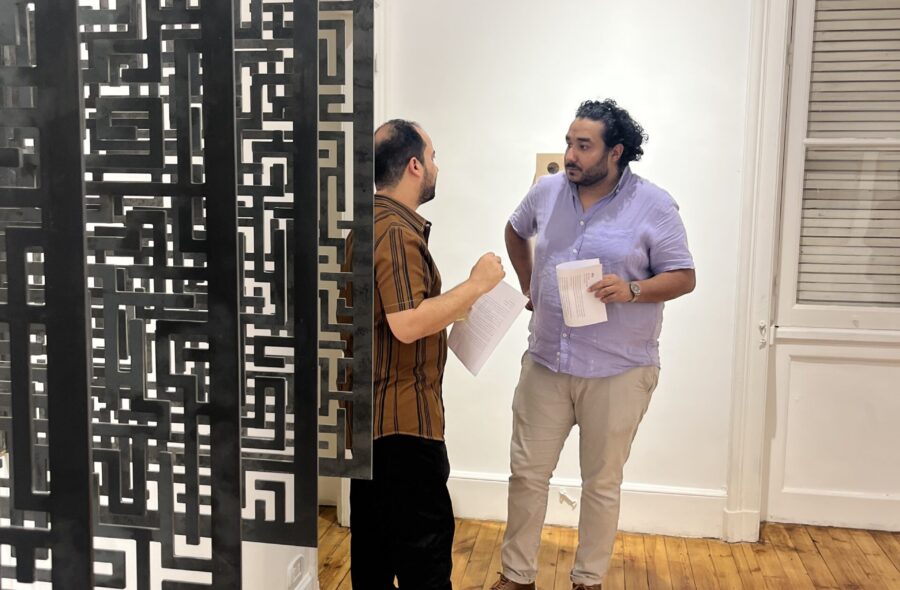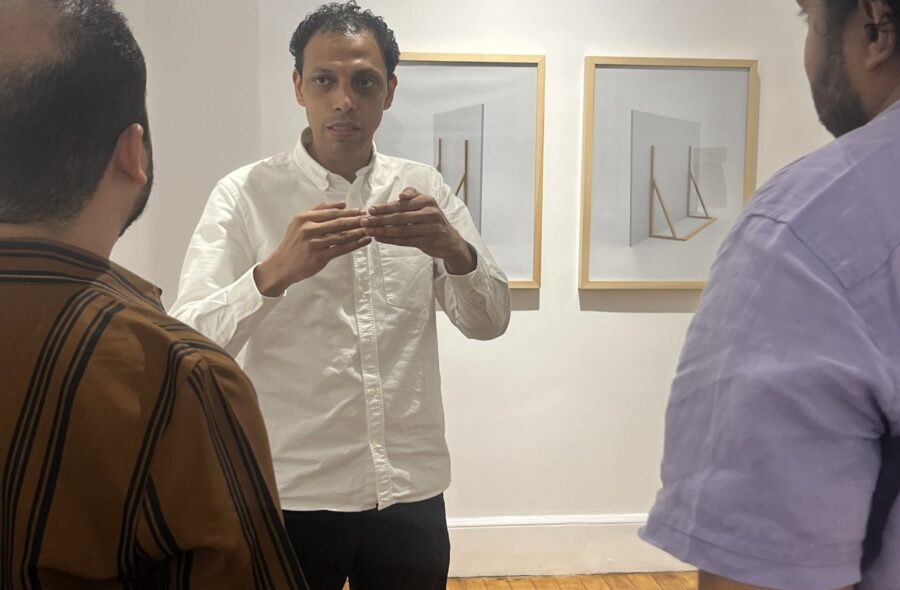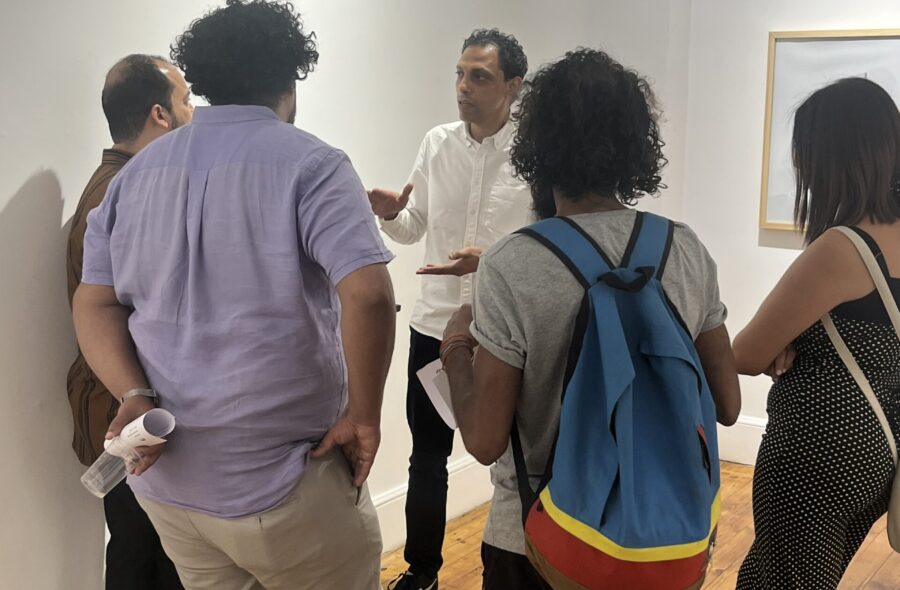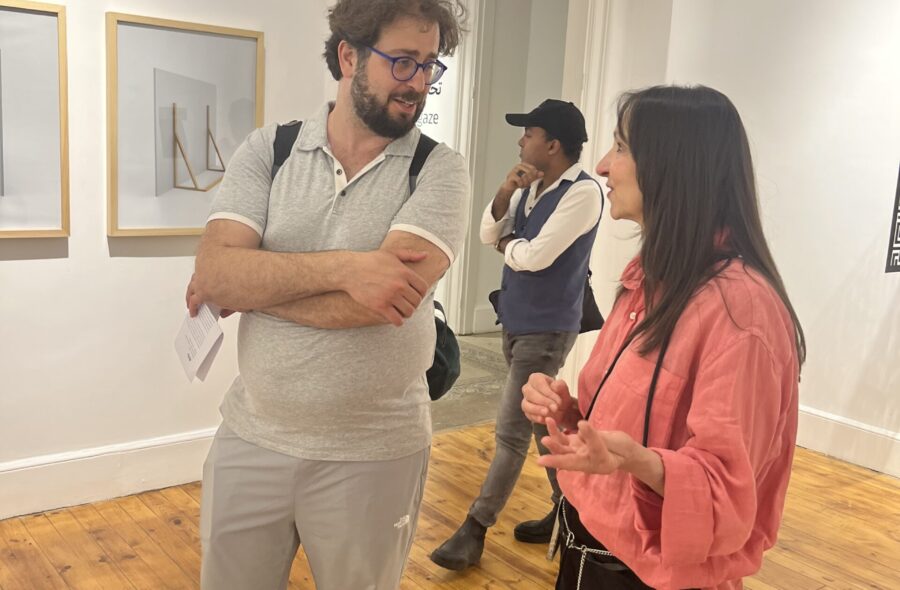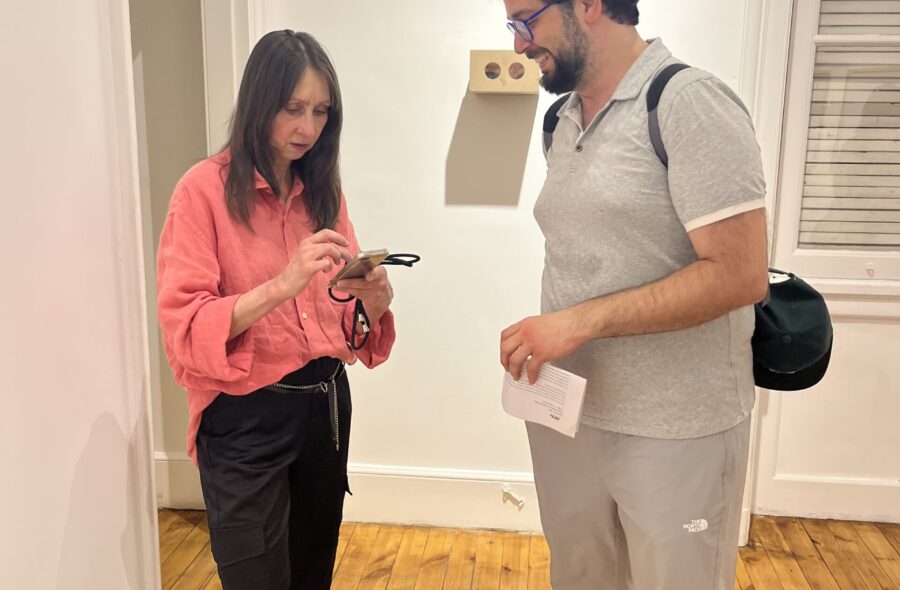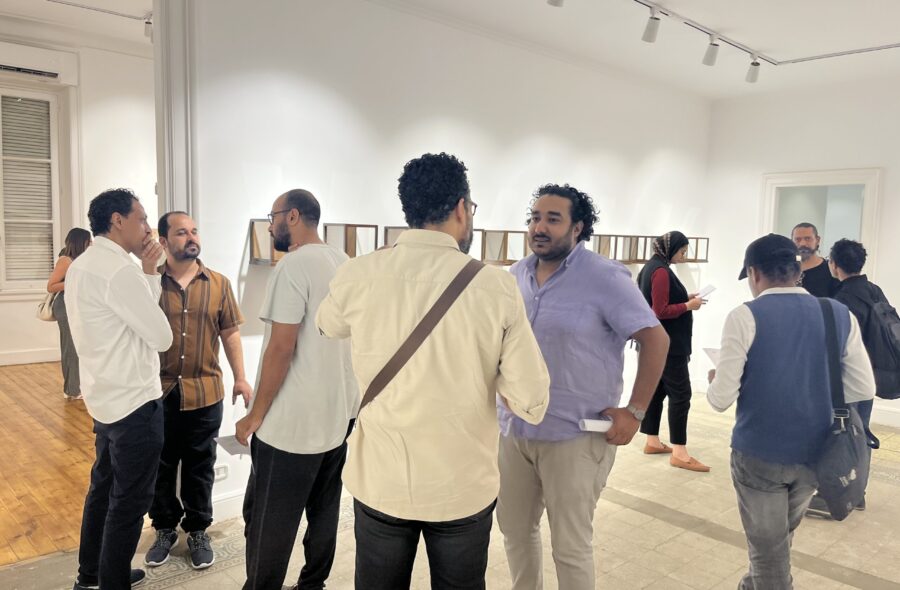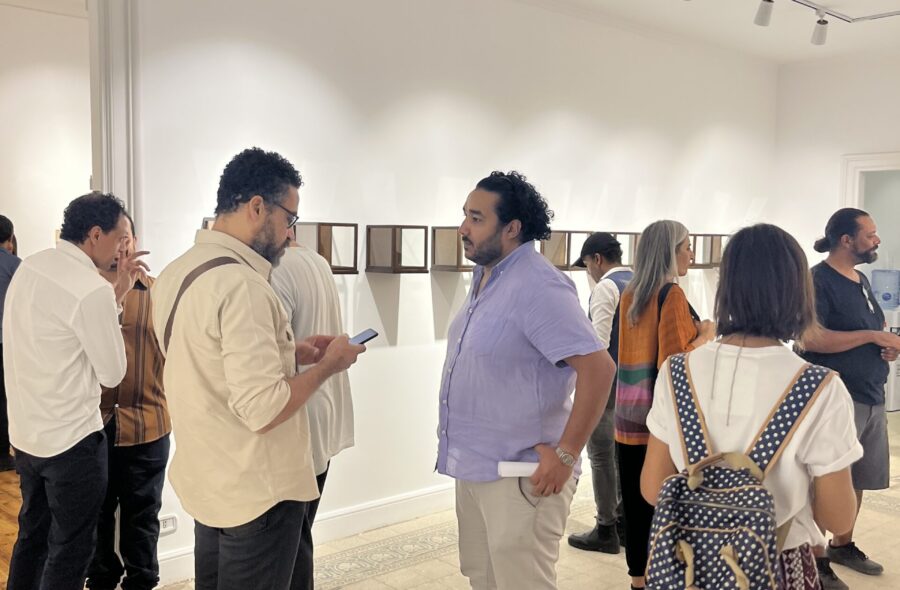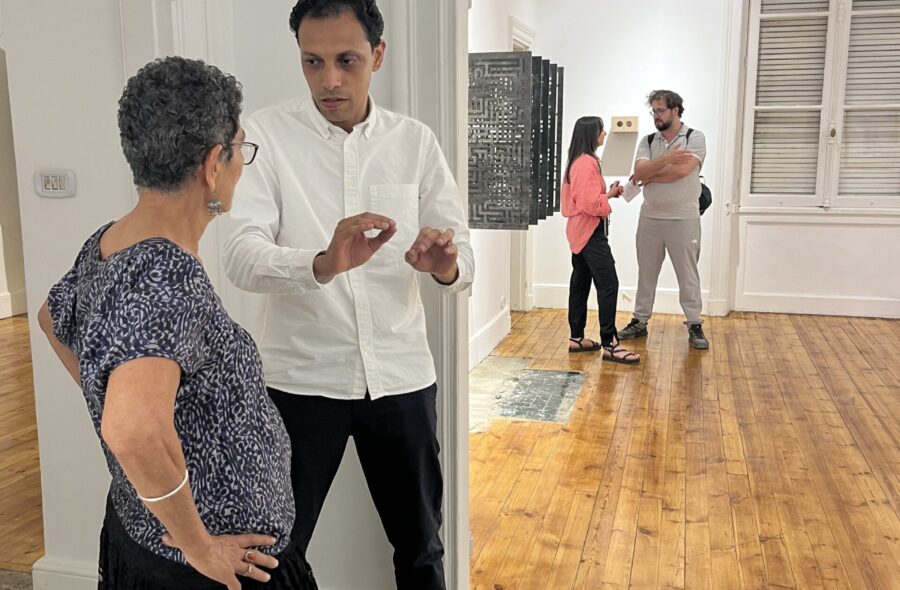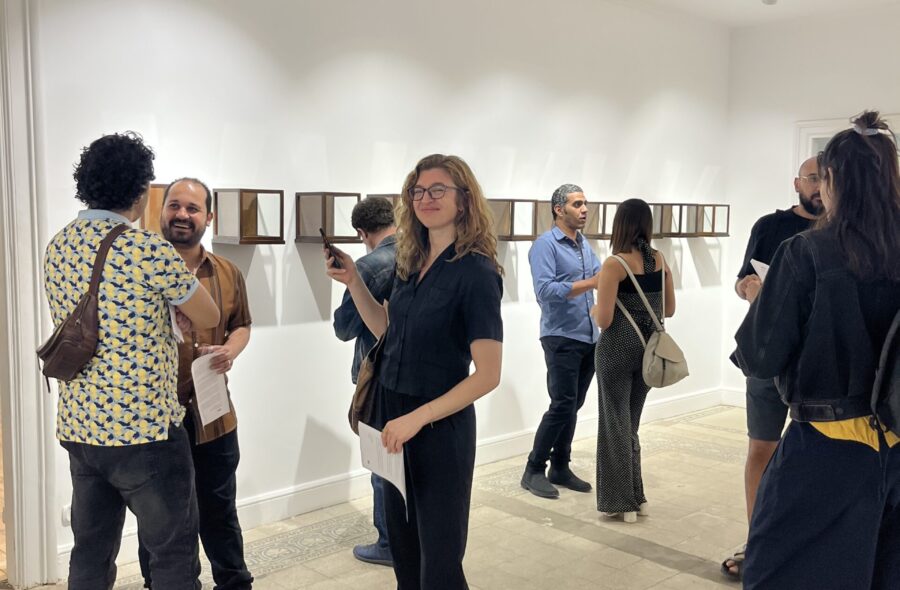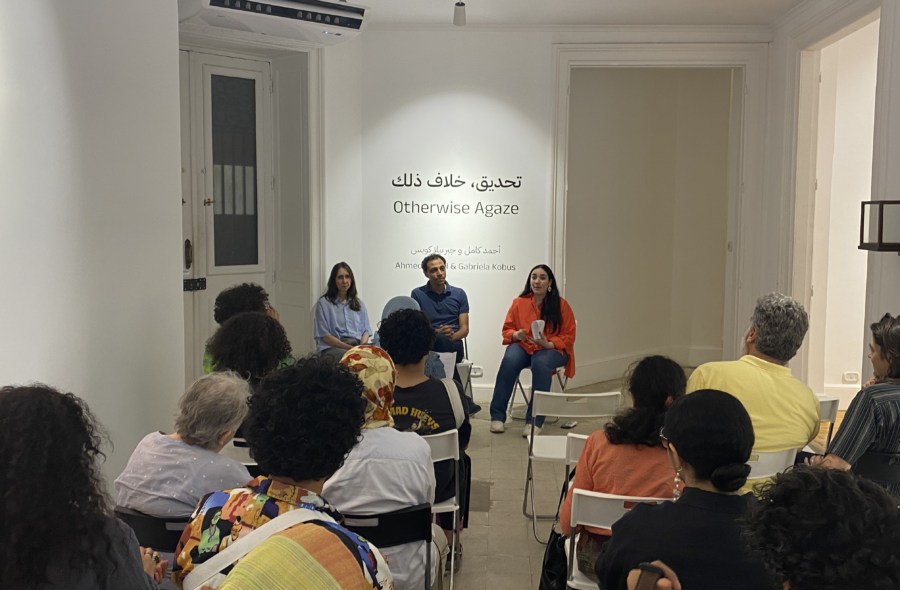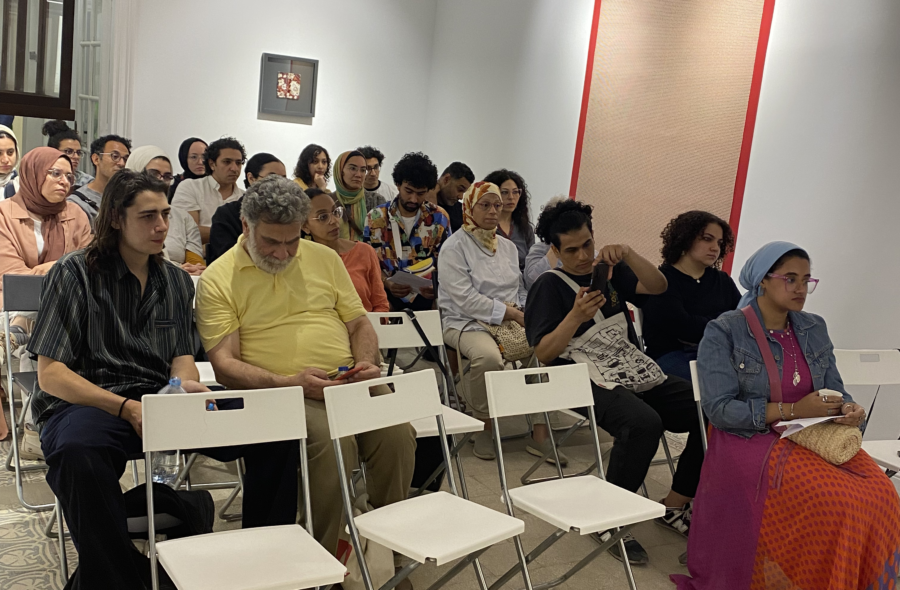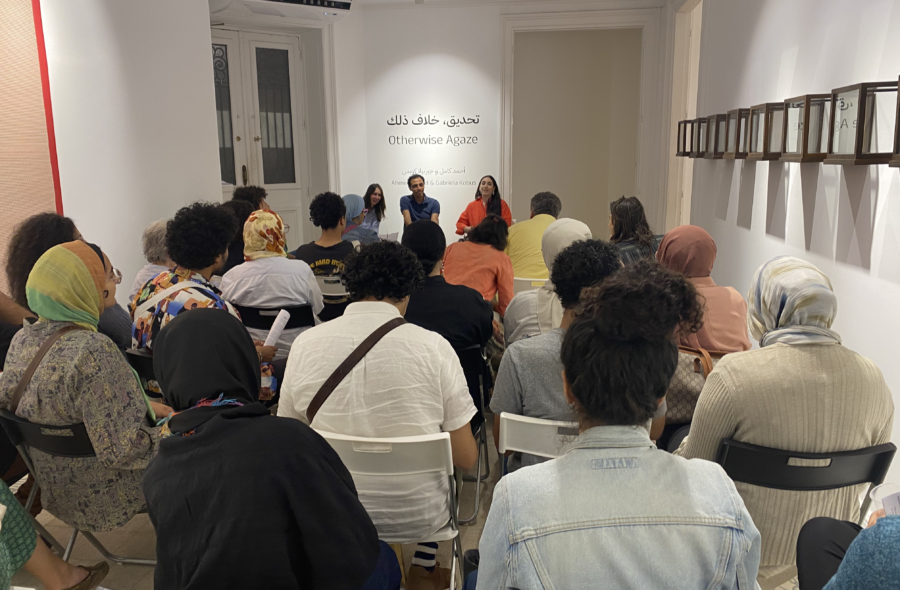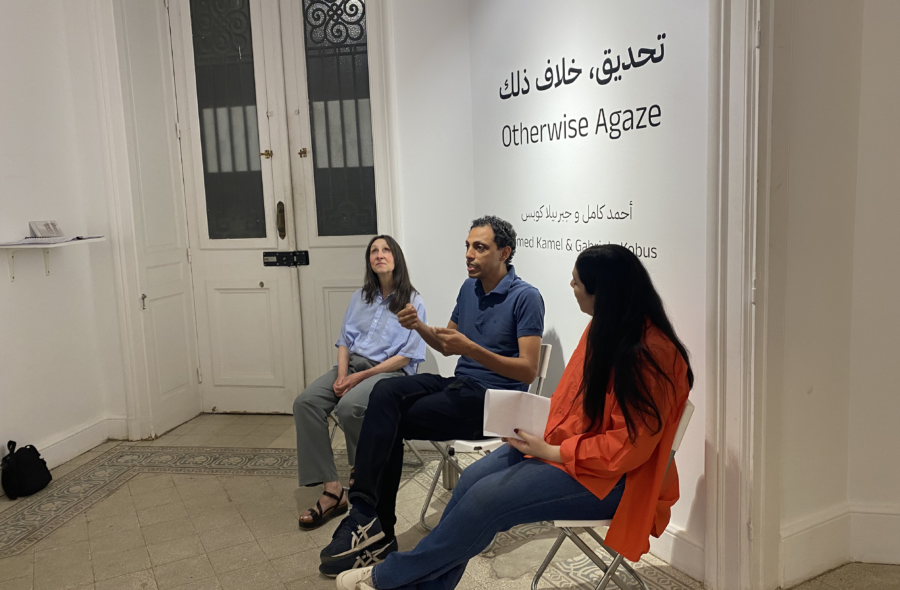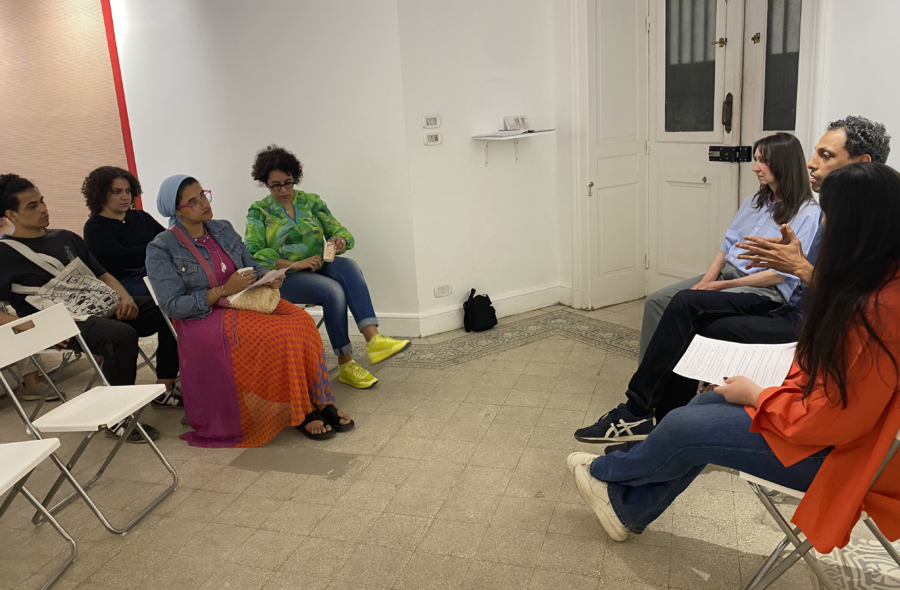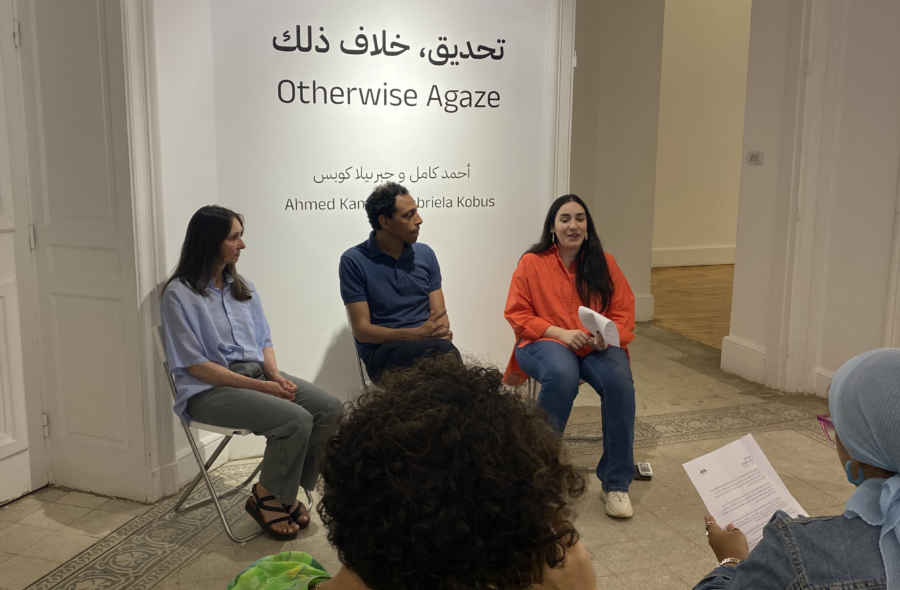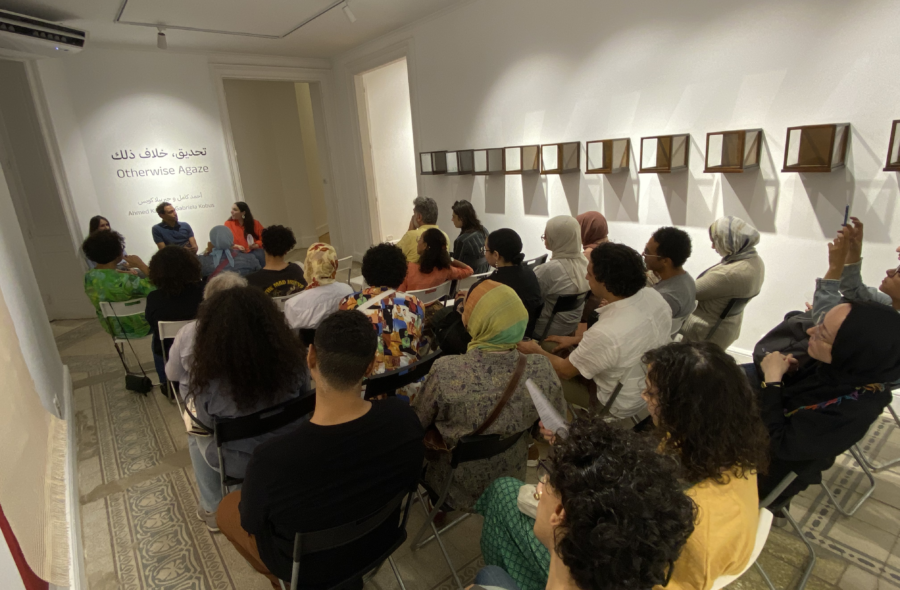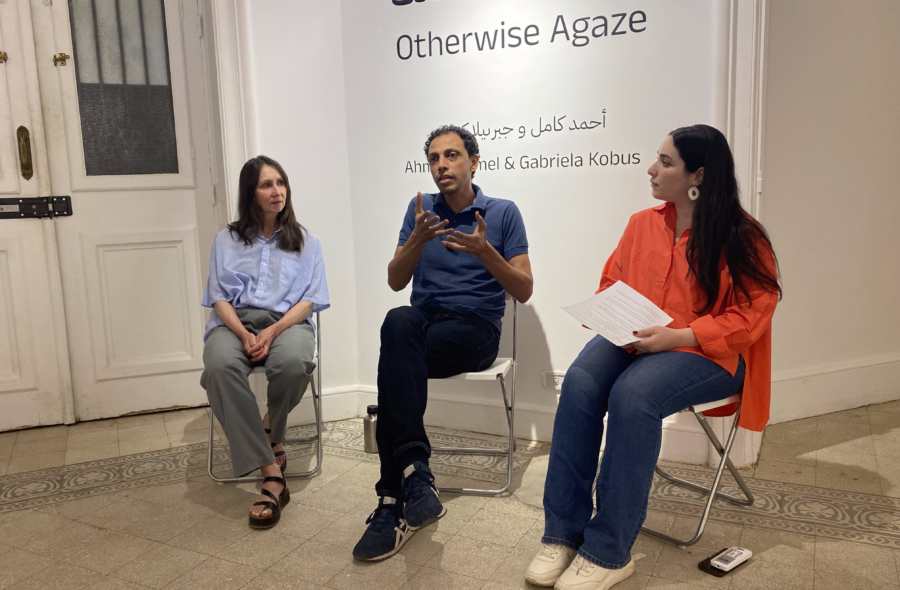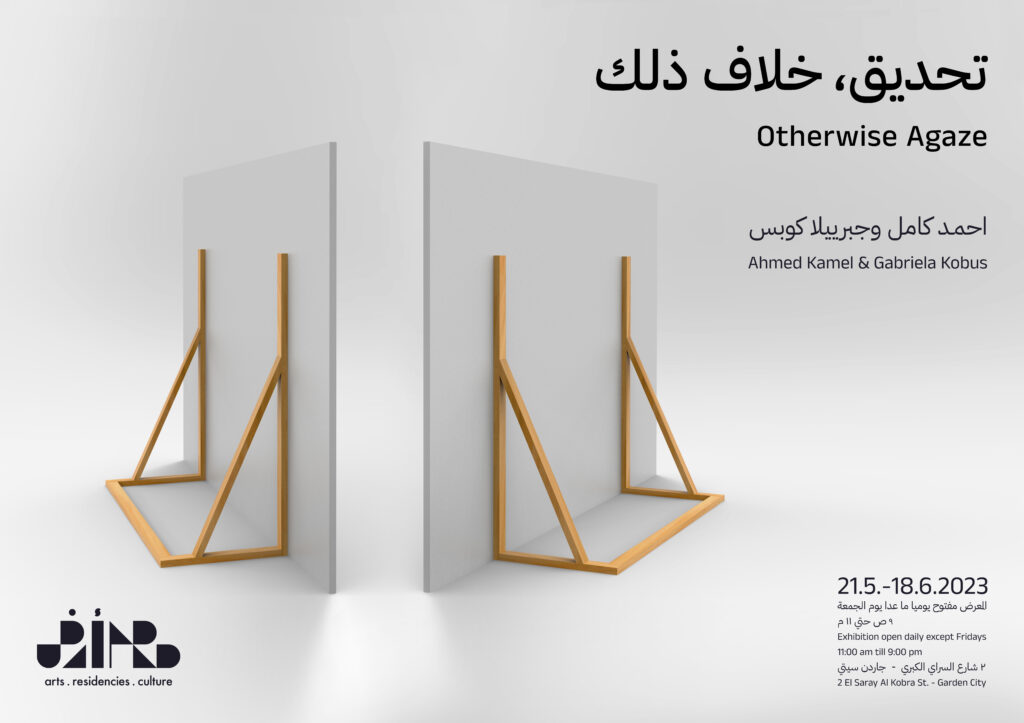
Otherwise, agaze
Ahmed Kamel & Gabriela Kobus
Otherwise, Agaze deals with the characteristics of world exhibitions in 19th-century colonial Europe and their relation to Cairo. These shows were in vogue at the time, and the organizers strove to offer their European visitors a direct experience of the “Orient.” In Paris in 1889,
Cairo was presented as a backdrop, with people and animals imported from Egypt as well as French people in disguise.
For visitors from the Middle East, the structure of representation and the “European effort to stage things for contemplation” caused alienation and irritation. An Egyptian author described this “obsession” as Intizam-Al-Manzar, “organizing the gaze.” Descriptions of
European travels and the confrontation with their intense curiosity were a frequent theme in publications that appeared in Cairo at the end of the 19th century.
Conversely, descriptions of Cairo written by traveling European authors in the mid to late 19th century show their disorientation due to what they considered a lack of order in the streets. European visitors continued to try to grasp the real as an image in order to cope with
the visual, acoustic, and olfactory overload. The problem of finding the distance as a viewer, as they were used to doing in the exhibitions in Europe, keeps appearing.
Exhibition objects are related to stagings, traces, remains, and references; they often have a vicarious function. They are arranged as references for a culture or for the treatment of thematic fields.
In a mutual artistic practice, Ahmed Kamel and Gabriela Kobus open up a space for illuminating and expanding the thematic field from different cultural perspectives. They deal with representation methods and the processes of expropriation. The idea of making the world
available was manifested in Europe in the colonial era. Kamel and Kobus address visual forms inspired by this topic and developed objects from various fragile and stable materials; glass and wood are used, as well as textiles and porcelain
ARTIST TALK

